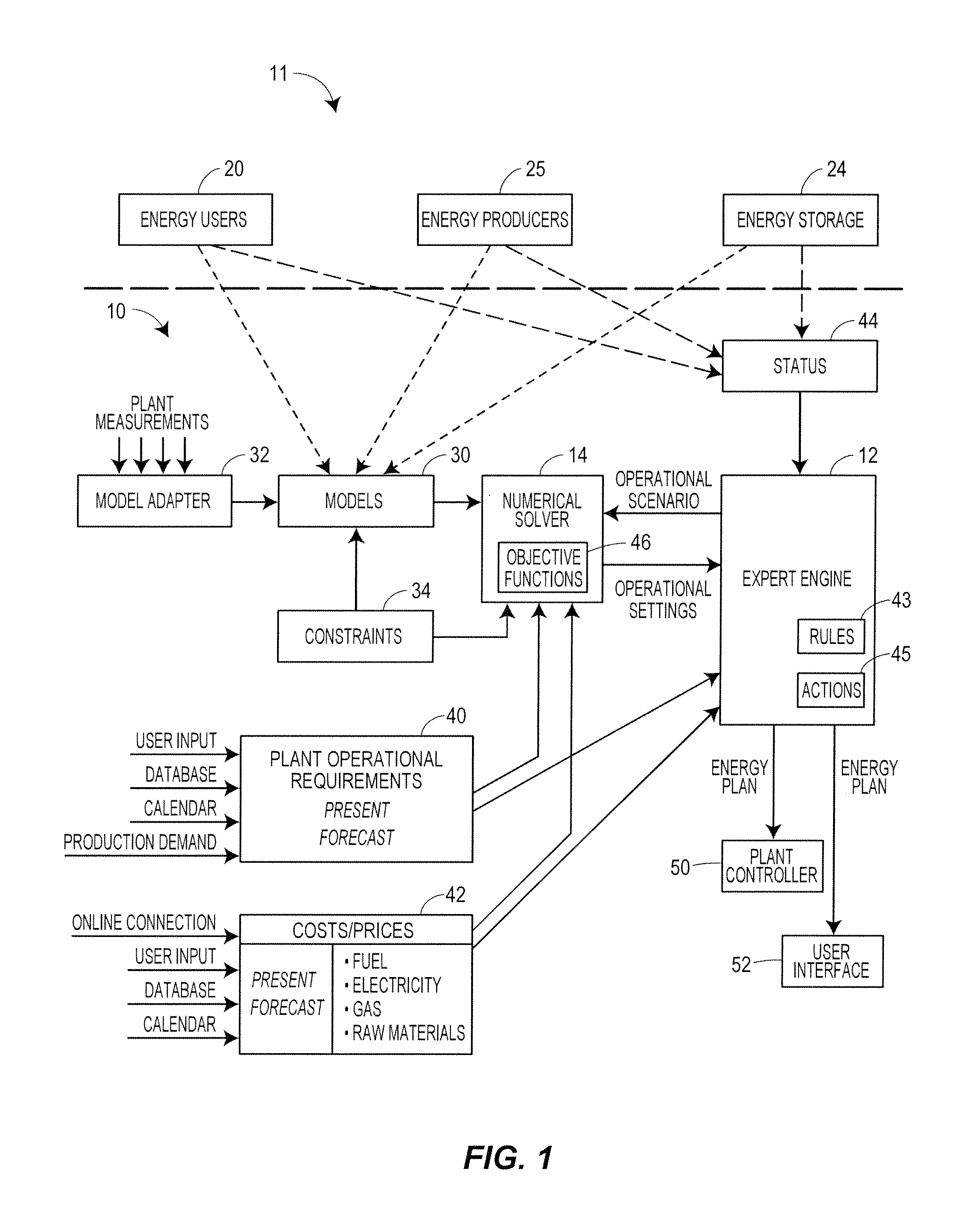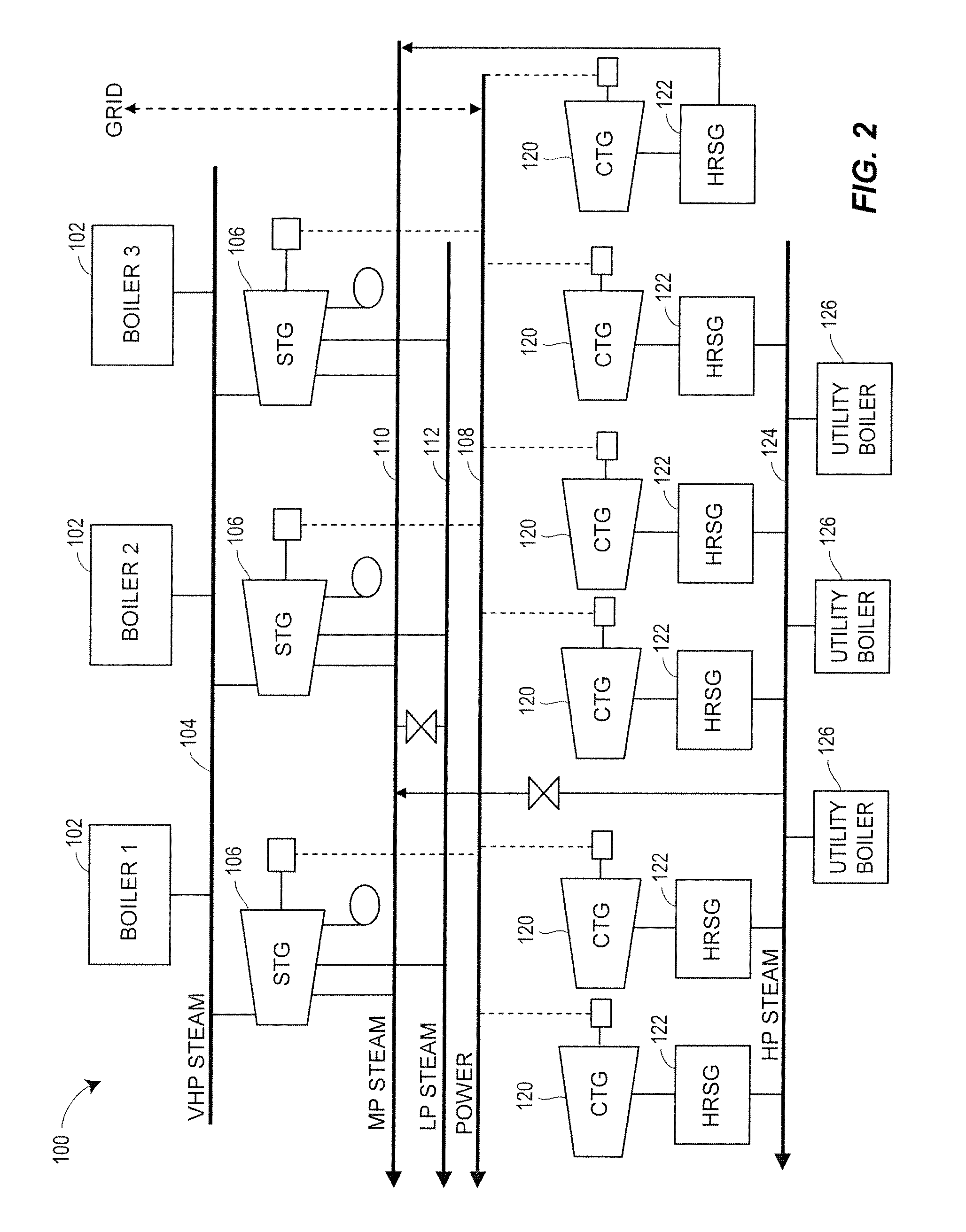Energy management system
a technology of energy management system and energy management system, applied in the integration of power network operation system, process and machine control, program control, etc., can solve the problems of not being configured to determine the energy savings, industrial energy management system in use today does not obtain the energy cost savings, and is limited in scope. , to achieve the effect of minimizing the cost of energy, and reducing the overall cost of energy within the plan
- Summary
- Abstract
- Description
- Claims
- Application Information
AI Technical Summary
Benefits of technology
Problems solved by technology
Method used
Image
Examples
Embodiment Construction
[0031]With electricity being more of a major component in the cost of manufacturing, load shedding or, more generally, load management, can be used in industrial plants or other types of plants for more than just making sure plant operation equipment and frequency is maintained. Instead, load shedding, in combination with load restoration, can be used to manage the electricity and other energy costs of the plant in a manner that minimizes or otherwise optimizes energy costs within the plant, thereby making the plant operate in a more profitable manner. In particular, an energy management system as described herein may be used to control a plant or to advise a plant / community operator as to which loads (equipment) to connect or to operate at any particular time, when to shed loads because operation of these loads would be unprofitable or less profitable at that time, when loads should be restored, which loads should be restored first when bringing loads back on-line, etc., all to min...
PUM
 Login to View More
Login to View More Abstract
Description
Claims
Application Information
 Login to View More
Login to View More - R&D
- Intellectual Property
- Life Sciences
- Materials
- Tech Scout
- Unparalleled Data Quality
- Higher Quality Content
- 60% Fewer Hallucinations
Browse by: Latest US Patents, China's latest patents, Technical Efficacy Thesaurus, Application Domain, Technology Topic, Popular Technical Reports.
© 2025 PatSnap. All rights reserved.Legal|Privacy policy|Modern Slavery Act Transparency Statement|Sitemap|About US| Contact US: help@patsnap.com



